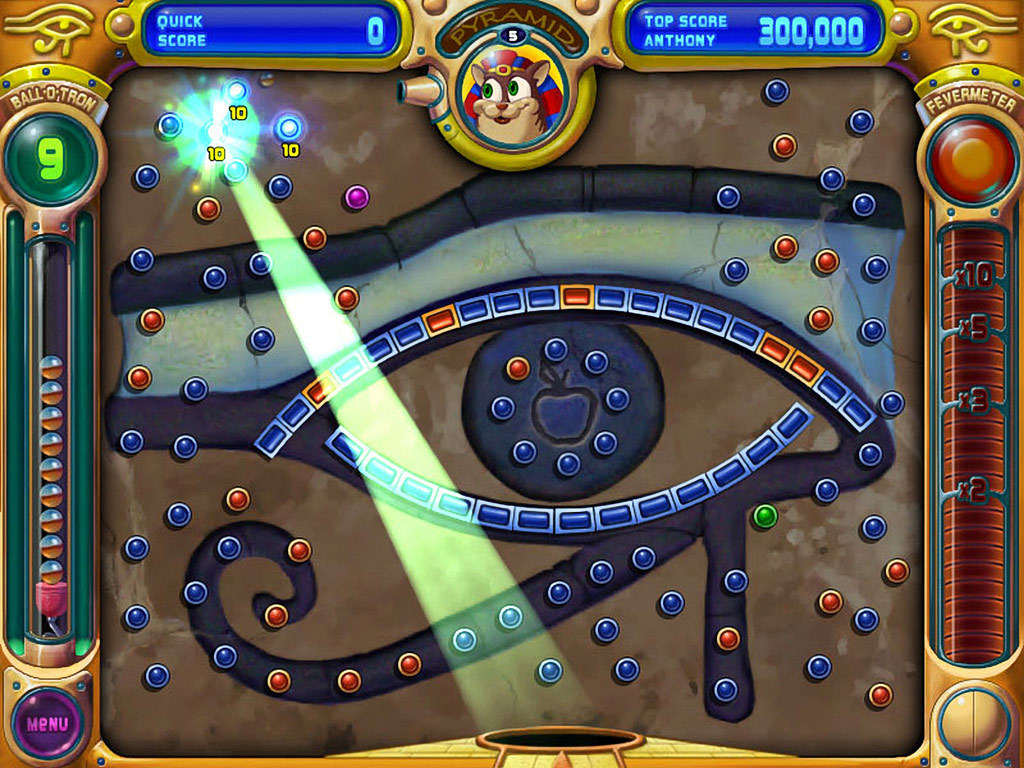

When a game mechanic is finally set, you may think the team can simply start building levels and adding art, music and effects. He wondered, "What if some of the pegs were special - maybe they'd be the real targets and the others just obstacles?" Enter the bright, shiny orange pegs of Peggle!Īfter months of prototyping, the game mechanic was finally ready… and packed with fun! It was just what the team had been looking for in the Pachinko game, yet in many ways, it was nothing like they first envisioned.īut everyone knew the game could be even better. "When you hit things, they disappear."īrian also had a revelation late in developing the game. "It's just a fact of life", Brian jokes. , AstroPop): they made the pegs disappear after being hit, so the other pegs could be hit more easily. So they took a tip from breakout style games (e.g. While making those levels, the team realized they still needed to make the game more player-friendly. He designed a variety of levels to test the new game functionality (also called a game mechanic). Sukhbir responded, "Maybe we're on to something."īrian took the level and ran with it. Throw away the fantastic physics engine - we're only shooting one ball at a time." "I turned to Sukhbir and said, 'What if this was the game? Just one ball at a time, hitting a certain number of pegs, clearing them from the level. "This new level was really fun" says Brian. The new goal of lighting pegs brought new dimensions of aiming and timing to the gameplay. This level was much less like Pachinko and more like… well, like trying to hit pegs and earn some wacky rewards. And to top it off, the level ended with a rousing rendition of "Ride of the Valkyries!"! The idea seemed crazy at first: shoot only one ball at a time and, instead of simply hoping to miss or bounce smartly off the pegs, you had to hit all the pegs to light them up next, you had to get the balls into valued holes. Then, Sukhbir thought up a sample level that changed everything. At other times, the game seemed way too hard to succeed at. It was definitely fun but sometimes the levels got too cluttered and messy again. Things like spaceships and windmills began to emerge, crowding the screen with obstacles that kept the player hoping that at least some of the bouncing balls would find their way to the jackpot bucket. "Each level was like designing an entirely new pinball table" Brian recalls. They wanted to pack every level with obstacles and many goals to achieve, which made the project very challenging.

As with every other development project at PopCap, they added some basic graphics and sounds, ignored special effects for the time being, and tested and shared the results with coworkers in hopes of finding the perfect blend to fit the fun model of game play they envisioned. They needed a little more time.Īnd so began a four-month process of creating handfuls of prototypes using various game designs. They knew there was a game in there, but at the time they "just had a whole bunch of different ideas that mostly didn't work" says Sukhbir. "The main issue was finding the right balance of luck versus skill." It was "too random and luck-based" recalls Sukhbir. After testing it out, Brian and Sukhbir still really liked the concept - which, actually, was a big deal! - but the game was too difficult and too chaotic. The first version of the game was very much like Pachinko, with lots of balls falling at once and scoring that was based on the number of balls that landed in the jackpot bucket. Nothing is set in stone early on, so we never expect our first attempt to be perfect. Making a PopCap game can take many months just to get the right gaming concept: we create many prototypes to try out lots of different ideas, but we'll have to dump most of them along the way. At this early stage, they were only dealing with the simple art of pegs and balls, and experimenting with different peg patterns and drop speeds. He and producer Sukhbir Sidhu then designed some test levels to put the new code, dubbed the "physics engine" through its paces. To get things started on Peggle, Brian Rothstein (aka Ace) programmed a computerized world that would simulate gravity and make balls fall and bounce realistically through a field of pegs on screen. Balls that don't land in the jackpot drop into a tray which pays out more balls and a chance to win prizes.Īt PopCap, we begin creating a game using a bare-bones template - just a basic game functioning without any art or sound to see if an idea will fly. Then, you just hope the balls can survive a variety of pins and obstacles to fall into a jackpot-type bucket at the bottom. In Pachinko, you control the flow of balls that continuously fall from the top of a machine. The team wanted to make a game that would resemble Pachinko - a colorful, chaotic slot-machine-type game that's a big hit in Japan. Like most PopCap games, Peggle started with a simple thought.


 0 kommentar(er)
0 kommentar(er)
